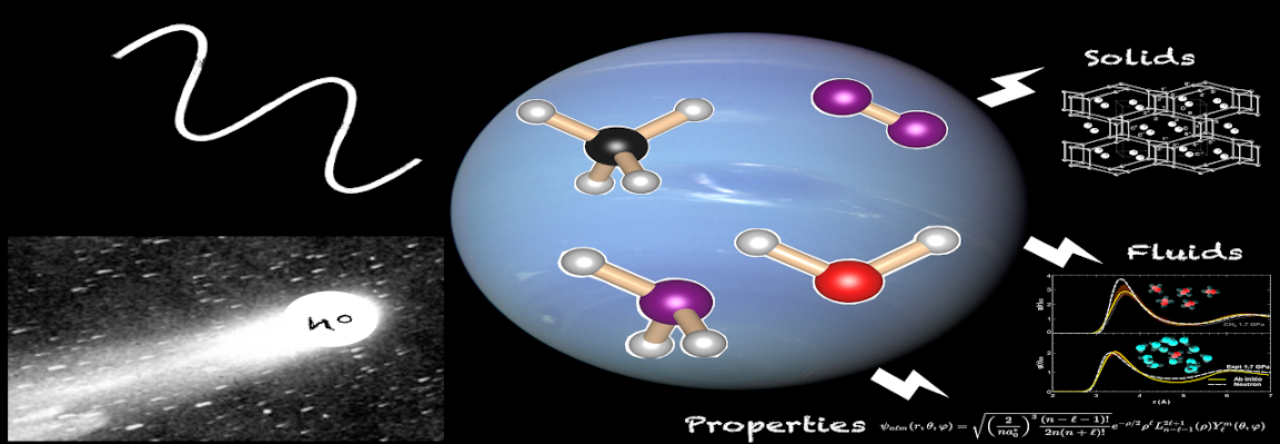Our group is focused on the behaviour of (mainly) molecular light systems under pressure, especially planetary ices (water, ammonia, methane, etc.). Apart from being of fundamental importance in physics and chemistry (presence of Hydrogen bonding, hydrophobicity, hydrophilia), these chemical species are found in vast amounts in the gas giants (Neptune, Uranus), their satellites (Titan) and throughout the Universe.
We employ a wide range of experimental and theoretical techniques to explore the phase diagrams of both pure component and mixtures of the systems of interest, in all condensed matter phases (solid, fluid and amorphous).
Experimental techniques:
- Neutron scattering
- Quantitative imaging & Raman spectroscopy
Theoretical techniques:
- Classical (forcefield-based) Molecular Dynamics simulations
- First-principles (ab initio Density Functional Theory) Molecular Dynamics
- Reverse Monte Carlo fitting of diffraction data
To reach the conditions required for our experimental work, we use both low volume apparatus (Diamond Anvil Cells) and high volume apparatus (Paris-Edinburgh Press, Large Volume Diamond Anvil Cells).
